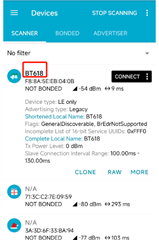Other Parts Discussed in Thread: SYSCONFIG, CC1352R
My purpose is to change the device name during the operation of the device. After calling the interface GGS_SetParameter, I can see that the device name on the app side has not changed, as shown in the figure below. What is the problem?




